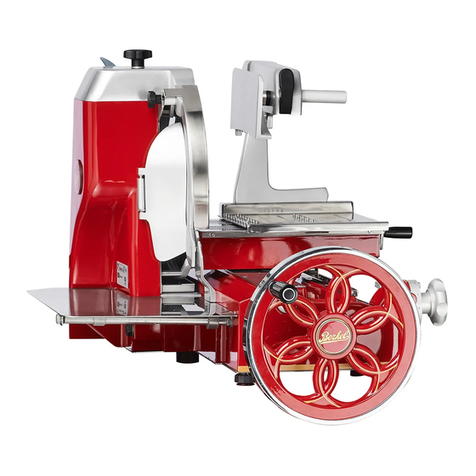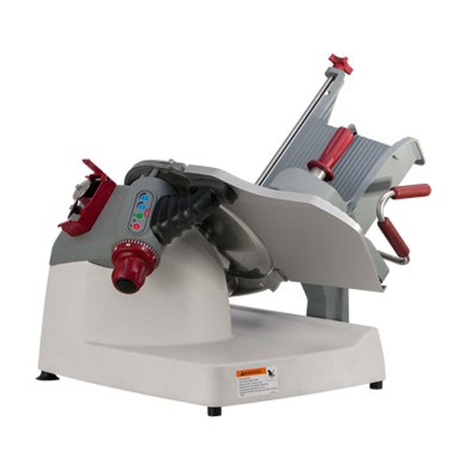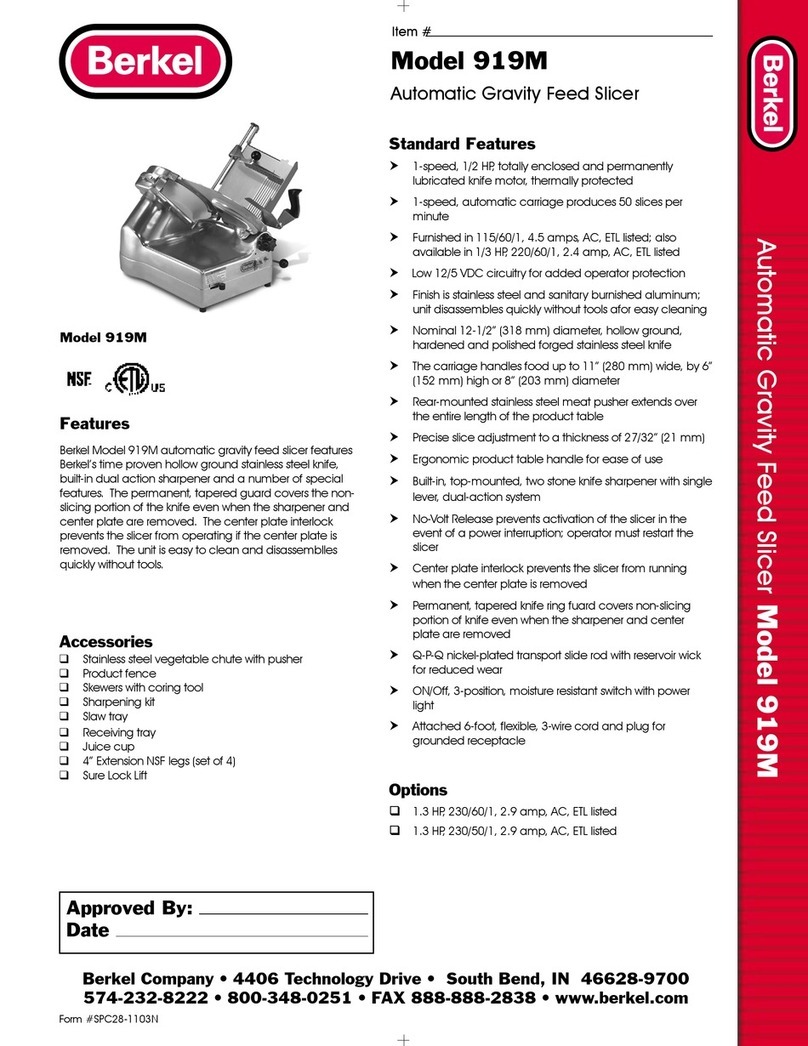Berkel 936 Series User manual

User Manual for models
936/937 Series
USER MANUAL FOR
936/937 Series
Van Berkel International S.r.l.
via Ugo Foscolo, 22
21040 Oggiona S. Stefano (VA) - ITALY
T +39 0331 214311
info@berkelinternational.com
www.theberkelworld.com

page 2
Contents
1. General Information 4
1.1. Notes regarding the operating instructions 4
1.2. Notes regarding warranty 4
1.3. Notes regarding security 5
1.4. Dimensions of the machine and technical data 5
1.5. Description of the machine 6
1.5.1. General plan of the machine 7
1.6. Usage 7
2. Installation and initial operation 8
2.1. Checking the contents of the carton 8
2.2. Installation 8
2.3. Electrical installation 9
2.4. Checking the direction of blade rotation 9
3. Operation 9
3.1. Important notes before switching on the machine 9
3.2. Switch functions (push button) 9
3.3. Thickness of slices 10
3.4. Operation of the end piece holder 10
3.5. Automatic or manual movement of the carriage 10
3.6. Automatic operation 11
3.6.1. Engaging carriage 11
3.6.2. Loading the carriage and adjusting the thickness of slices 11
3.6.3. Adjusting the speed of the carriage 11
3.6.4. Notes regarding the slicing programme 12
3.7. Manual operation 12
3.7.1. Disengaging carriage 12
3.7.2. Loading the carriage and adjusting the thickness of slices 12
3.7.3. Notes regarding the slicing programme 12
4. Slicing functions 13
4.1. Description of the keyboard 13
4.2. Starting the slicing programme 13
4.3. Changing the slicing programme 14
4.3.1. Stacking 15
4.3.2. Shingling lengthwise 16
4.3.3. Shingling crosswise 17
4.3.4. Circle shingling 18
5. Programmed Operation (PLU) 20
5.1. Choosing PLU-Number 20
5.2. Data conditioning 21
5.2.1. Create article and modify data 22
5.2.2. Copy article 23
5.2.3. Delete article 23
5.2.4. Modify article 24
6. Slicing of end pieces 24

page 3
7. Cleaning 25
7.1. Taking off parts of carriage 25
7.2. Taking off the blade guard 27
7.3. Taking off staking device and chain frame 27
7.4. Taking off deflector and receiving plate 27
7.5. Cleaning the blade 28
7.5.1.
Cleaning the front of the knife 28
7.5.2.
Removing and cleaning the knife 28
7.5.3.
Cleaning the inside of the knife ring guard 29
7.5.4.
Refit the knife 28
7.6. Cleaning the single parts 29
7.7. Reassembling the parts 30
8. Sharpening the blade 30
8.1. Sharpening device 30
8.2. Using the sharpening device 30
8.3. Sharpening the blade 31
8.4. Repositioning the sharpener 31
8.5.
Mounting the removable sharpening device 31
8.6.
Sharpening the blade 32
8.7.
Remove the removable sharpening device 32
9. Maintenance 333
9.1. Lubrification of sliding bars - End piece holder and receiving tray 33
9.2. Lubrification of stacking device,blade protection and adjusting bar of the carriage 33
9.3. Lubrification of adjusting bar (fence) of the carriage and the roller deflector bearing 34
10. Trouble shooting 35
10.1. Error messages on the display 35
11. Waste disposal 36
Additional operation instructions for conveyor belt
12. Dimensions and description of the machine 37
12.1. Dimensions of the machine and technical data 37
12.2. Description of the machine 38
12.3. General plan of the machine 38
12.4. Usage 39
12.5. Installation and initial operation 39
12.6. Installation 39
12.7. Electrical installation 39
13. Operation 40
14. Cleaning 40

page 4
1. General Information
1.1. Notes regarding the operating instructions
Read the following hints before installing and operating this machine!
Make yourself familiar with this machine by reading this operating instructions carefully.
Within this operating instructions there are indicated the following safety notes and hints:
means Attention. Notes for probable danger and for avoiding mistakes.
means notes and hints regarding certain operation procedures.
1.2 Notes regarding warranty
The installation and initial operation should be carried out by an authorised supplier or service technician.
Only trained personnel are allowed to operate this machine. When required, the training has to be repeated.
Supervisory and operating staff must read the operating instructions carefully before initial operation of this
machine. Starting, operating and cleaning have to be done according the operating instructions and are only
allowed after having been introduced to the correct way of working.
In case of:
• unauthorised installation
• unauthorised electrical installation
• incorrect operation
• misuse
• constructional alteration
• detaching security or protecting equipment
• and in case of using non-original Berkel spare parts
Berkel does NOT take any responsibility
In above case the operator acts on his own risk and is wholly responsible for damage which might occur.
Therefore, only use original Berkel spare parts!
In case high pressure or steam cleaning devices or high pressure water is used all claims
regarding warranty will be refused.
This is valid also for faults and damages which are caused by natural wear and tear.
The pictorial representation might differ from the machine supplied because of regional specific requirements or
as a result of technical improvement.
The contents of this operating instructions is not affected by that.

page 5
1.3. Notes regarding security
This machine corresponds to legal security and hygienic requirements. Nevertheless there is a risk of injury in the
case of incorrect or inattentive operation or maintenance. Especially hands and fingers are at risk of injury. Staff
operating this machine must be fully trained on the correct procedures for operation and maintenance in
accordance with these operating instructions.
Pay attention in any case to the following notes regarding security:
See to it that unauthorised, untrained personnel and in particular children cannot start the
machine. It is not allowed to detach, to modify or to disregard protecting or security equipment.
This could result in a high risk of injury.
Always work with concentration, do not let distract yourself from your work.
Only cut food products as indicated in this operating instructions.
Never carry out experiments. Never try to cut foreign material.
Never cut deep frozen products.
Never check the sharpness of the blade with your fingers.
Never detach the blade without supplied knife remover.
Never use the machine as a place to put something on or to do other work on.
Take care that the floor space is clean, dry and non-slip.
In case the current supply cable or the plug are defective, these parts have to be exchanged or repaired by your
after sales service or an electrician.
Before cleaning remove the plug from the electrical socket before proceeding .
If the machine makes an unusual noise switch off the machine immediately.
In case the fault cannot be corrected by the operator, contact authorised after sales service.
1.4. Dimensions of the machine and technical data (only for 936 version)
Overall dimensions ( 840x980x700h mm standard table) and ( 840x1140x700h mm long meat table)
Foot distance 574x502 mm
Max. cutting size ca. 255x195h mm
Thickness of slices 0 - 10 mm (infinitely variable)
Diameter of blade 330 mm
Sound level < 54 db(A)
Weight about 87 kg
Voltage and cycles see rating plate
Power 0,9 kW

page 6
1.5. Description of the machine
This food slicer is fully automatic with integrated shingling and stacking device.
The carriage is moved automatically. For operation, cleaning and sharpening the automatic drive of the carriage
can be disengaged.
The blade is driven electrically with a 1-phase or 3-phase geared motor. This geared motor is maintenance-free
and air-cooled.
By means of a special air circulation the warming up of the motor is very low, especially around the blade.
The automatic carriage is moved by a strong d.c. motor.
The food product is pushed against the blade by a fully automatic end piece holder.
The material used in the food zone corresponds to all requirements of food hygiene.
The complete machine body, the thickness plate, the blade guard and the carriage are made of stainless steel.
The blade is hard chromed.
All visible bearings as well as open sliding surfaces are lubricated only with lubricant suitable for food zones.
For switching the machine on and off double white / red push button is used
Self-starting of the machine after a voltage drop is avoided by the electric control.
There are internal fuses to protect the electronic control, the motors are controlled electronically.
The carriage can only be tilted aside when the automatic drive is disengaged and the thickness plate is closed
completely.
When the carriage is tilted aside, the thickness plate is locked in this position and cannot be opened
The protecting and security equipment as well as electrical and mechanical components correspond to
regulations in force.
The machine is equipped with the following security equipment:
•no self-starting of the machine after a voltage drop
•fully automatic stop of the blade
•double push-button control
•fixed ring around the blade, non-removable
•central blade protection, fixed, removable
•locked thickness plate when the carriage is tilted aside
•internal fuses for current supply and electronic control

page 7
1.5.1. General plan of the machine
1 End piece holder
2 Comb, end piece holder
3 Adjusting bar
4 Rubber foot
5 Star knob for carriage
6 Lever
7 Carriage feed plate
8 Carriage
9 Thickness plate
1.6. Usage
The following food products can be sliced by taking into account the maximum cutting capacity:
• - all kinds of sausages
• - ham / bacon
• - roast meat / cooked ham
• - meat
• - cheese
The following products are not allowed to be sliced because of danger to get injured:
- NON FOOD articles
- food products with bones
- deep frozen food products
The machine should be installed in a retail environment. The room temperature must not be under 10°C a nd not
over 40°C.
The machine is drip-proof only.
High air humidity and condensation water may damage the machine. The machine is not splash-proof.
19 Hand protection
20 Thickness knob
21 Guiding axle, end piece holder
22 Plate of end piece holder
10 Guiding axle carriage
11 Blade guard
12 Fixed ring
13 Star knob stacking device
14 Stacking device
15 Rating plate
16 Receiving plate
17 Chain frame
18 Display and keyboard

page 8
2. Installation and initial operation
First read the operating instructions very carefully!
Pay close attention to all notes.
Operating procedures have to be carried out as described.
Always work carefully and concentrate, this should prevent damage and injuries
The installation, introduction and initial operation has to be done by an authorised supplier or
service technician.
2.1. Checking the contents of the carton
The supplied carton has to have to following contents:
•Berkel food slicer model 936-937
as well as the following equipment:
•chain frame
•stacking device
•receiving plate or conveyor belt
•Knife remover and screwdriver
•table for food slicer (only for machines with conveyor belt)
•these operating instructions
2.2. Installation
The food slicer model 936-937 has to be installed on a plain, horizontal, non-slip and stable
surface. If necessary the machine should be clamped down in position
Recommended working height of the work surface about 800 mm.
Pay attention to the required counter space.
Place the chain frame upon the 3 locating positions .
Place the stacking device upon its location bush and screw it tight.
Place the receiving plate upon the machine.

page 9
2.3. Electrical installation
Before you plug in the machine, you have to check if the current supply is the same as indicated on the
rating plate. In case there are discrepancies you have to inform the supplier or technical service.
Under no circumstances plug in the machine!
The socket-outlet has to be equipped with earthing contact. It has to be connected according to customary
regulations. A defective socket-outlet may damage the machine or endanger the operator.
In case it is necessary to exchange the plug, this has to be done by an electrician or the after sales service.
2.4. Checking the direction of blade rotation (for 3 phase motors only)
Switch on the machine.
Close completely the tickness plate
Push the ON white button →Display is illuminated.
Push the key "cleaning" on the display
The blade has to rotate in direction of arrow (counter clockwise).
The blade is stopped by pushing again the "cleaning" key
In case the blade rotates in wrong direction, the positions of the poles in the plug have to be
changed by an electrician or authorised service technician.
3. Operation
3.1. Important notes before switching on the machine
Because of security reasons pay attention to the following notes:
- first read this operating instructions carefully
- take care that the machine is placed on a stable and secure surface
- work with concentration
- never touch the blade
3.2. Switch functions (push button)
red push button = main switch off
white push button = main switch on

page 10
3.3. Thickness of slices
The thickness of slices is infinitely variable from 0 to 10 mm. In
order to adjust the thickness of the slices you have to turn the
thickness knob. Turning to the left thickness plate opens. Turning to
the right: thickness plate closes. The scale on the thickness knob
serves as adjusting aid.
In case the machine does not
start and the tickness value on
the display flashes after having
pushed the"Start/Stop" key The
thickness knob should be roated to a value =>0,4. Then
start again.
3.4. Operation of the end piece holder
Grip the end piece holder lever and pull it towards the front of the
machine to disengage the drive. Then holding lever in this position,
pull the lever in direction of the knife, or away from it to move the
end piece holder. In order to engage the drive release the lever and
move the end piece holder slightly backwards and forwards
If the end piece holder is placed on top of the food product and the slicing process moves towards the
knife, the machine will automatically stop approximately 40mm from the knife. This is prevent the end
piece holder from hitting the sharpener cover. At this time, move the end piece holder to behind the food
product and restart the machine, the machine will now slice right up to the knife, (with minimum waste)
3.5. Automatic or manual movement of the carriage
The machine is equipped with an automatic carriage movement which can be disengaged. The carriage can then
be moved by hand.
automatic movement = lever in vertical position
movement by hand = lever in horizontal position
Adjusting automatic movement
Switch off the machine.
Turn lever counter clockwise to the vertical position.
Move the carriage forward and backward by hand until it is engaged.
Carriage can no longer be moved by hand now.
Adjusting movement by hand
Switch off the machine.
Turn the lever to the horizontal position.
Carriage can now be moved by hand.
Always switch off the machine for adjusting the carriage movement!
NEVER ENGAGE OR DISANGAGE THE CARRIAGE WHEN THE MACHINE IS RUNNING

page 11
3.6. Automatic operation
3.6.1. Engaging carriage
Turn lever at the rear of the carriage counterclockwise to the vertical position.
Move the carriage forward and backward by hand until it is engaged.
Carriage can no longer be moved by hand.
3.6.2. Loading the carriage and adjusting the thickness of slices
It is possible to slice 2 sausages with smaller diameters at the same
time. The slices will be placed on the receiving plate side by side.
ATTENTION! Before loading or removing food product from the meat table,
ALWAYS fully close the thickness plate (turn index knob to the right)
Lift up end piece holder.
Lay the food product against the front of the carriage.
Adjust the adjusting bar (fence) according to the size of the food product.
Disengage the end piece holder and adjust according to the size of the product.
Place the end piece holder upon the food product, or behind it
If the end piece holder is on top of the food product push the comb of the end piece holder into the food product.
Adjust the thickness of slices with the thickness knob (max. 10 mm).
By pushing the "end piece holder backward" key the
end piece holder is moved automatically.
3.6.3. Adjusting the speed of the carriage
Switch on the machine by pushing the white main switch.
By pushing the keys "carriage faster" or "carriage slower" you can change the speed of the carriage. The actual
speed is shown on the display. You can change from MIN, 26, 27, ...., 48, 49 to MAX. If there is shown for
example 35, the machine cuts about 35 slices per minute.
Pay attention to the fact that sensitive food products have to be sliced with slower speed. If the speed is too high
you cannot expect good slicing results.

page 12
3.6.4. Notes regarding the slicing programme
You can choose the following functions per slicing procedure which will be explained in detail in chapter 4:
•Stacking of slices, choice of 1 to 4 stacks.
•Shingling of slices lengthwise, choice of 1 to 2 lines, per line several shingled portions on top of the other,
adjusting the shingling distance of slices lengthwise.
•Shingling of slices crosswise, choice of 1 to 9 lines per line, several shingled portions on top of the other,
adjusting the shingling distance of the slices lengthwise and crosswise.
•Circle shingling of four different diameters and several portions on top of the other.
3.7. Manual operation
3.7.1. Disengaging carriage
Turn the lever at the rear of the carriage clockwise until horizontal position.
Carriage can now be moved by hand.
3.7.2. Loading the carriage and adjusting the thickness of slices
ATTENTION! Before loading or removing food product from the meat table, ALWAYS fully close the
thickness plate (turn index knob to the right)
Lift up end piece holder.
Lay the food product against the front of the carriage.
Adjust the adjusting bar (fence) according to the size of the food product.
Disengage the end piece holder and adjust according to the size of the product.
Place the end piece holder upon the food product, or behind it
If the end piece holder is on top of the food product push the comb of the end piece
holder into the food product.
Adjust the thickness of slices with the thickness knob (max. 10 mm).
3.7.3 Adjust the slicing program and start to slice
Select the required program:
•Stacking
•Shingling lengthwise
•Shingling crosswise
•Circular shingling
(See chapter 4 for more detailed information)

page 13
Move the carriage forward and backward by using the handle in front of the carriage.
It is very important to push the carriage to the utmost end position in order to trigger
the depositing procedure.
The machine can be stopped, or �nterrupted by pressing the red Stop switch
Always use the handle in order to move the carriage. The end piece holder is advanced automatically
also during the manual operation of the machine, so that the food product is pushed towards the blade
automatically.
•For machine with integrated sharpener:
If the end piece holder is placed on top of the food product and the slicing process moves
towards the knife, the machine will automatically stop approximately 40mm from the knife. This
is prevent the end piece holder from hitting the sharpener cover. At this time, move the end
piece holder to behind the food product and restart the machine, the machine will now slice right
up to the knife, (with minimum waste).
4. Slicing functions
4.1. Description of the keyboard

page 14
4.2. Starting the slicing programme
You have already put the food product into the carriage and you have adjusted the thickness of slices and the
speed.
When the machine is installed the technician adjusts the slicing programmes
corresponding to your special requirements. These programmes are saved for the
functions stacking, shingling lengthwise, shingling crosswise and circle shingling. The
main application for the keys stacking, shingling lengthwise, shingling crosswise and
circle shingling remains unchanged and is loaded after every restart of the machine.
This way you can operate the machine easily. You can start the machine as follows:
- push the white main switch
- then push the key "start-stop"
Now the blade is turning and also the carriage is moving automatically if it is engaged. In case the carriage is
disengaged, turn the lever (behind the carriage) until vertical, then move the carriage backwards and forwards to
engage automatic mode. It is very important to push the carriage to the utmost back position in order to trigger off
the depositing procedure.
In case the machine does not start and the tickness value on the display flashes after having pushed the
"Start/Stop" key The thickness knob should be roated to a value =>0,4. Then start again
The default program is the one set by the technician during installation, the factory set default is “stacking”
In case you want to adjust another slicing programme, proceed as described in point 4.3.
4.3. Changing the slicing programme
To change the slicing program, first push the the key code
and after push the key of the program required.
After having select ther required program, you can change each single parameter
(i.e.no. of slices, no. of rows, slice gap, etc.) moving line to line by pushing the arrow key
and set the appropriate value using nymeric keyboard.

page 15
4.3.1. Stacking
Push the key code and after key "stacking"
There is now shown on the display the preset stacking programme. It is shown graphically and in words. For
example as follows:
STACKING : SET ACT.
NO. OF STACK : 1
NO. OF SLICES : MAX
SPEED : 40
SLICES TICKNESS :
The cursor is flashing in the line NO. OF STACK . You can now change the value.
The NO. OF STACK can be chosen by pushing the required number of stacks on the key board.
The maximum quantity is 4 stacks (two stacks each side by side and behind each other). Enter the value by
pushing the key “↓“ and the cursor moves to the next line.
In case you have entered 2 stacks you can choose the position of the stacks, you will see on display an additional
information:
STACKING : SET ACT.
NO. OF STACK : 2
CROSSWISE=1 DOWN =2 LENGTHWISE=2 : 1 (this line is only shown with 2 or more stacks)
NO. OF SLICES : MAX
SPEED : 40
SLICES TICKNESS :
either side by side (CROSSWISE: value 1) or one behind the other (LENGTHWISE: value 2). This has the
following sense: In case the food product is not very high but long (for example bacon) it makes no sense to
choose two stacks side by side (crosswise) as they would overlap each other. However, the receiving plate is
large enough to position the stacks behind each other.
When there are sliced round food products with a calibre of maximum 90 mm there can be positioned two stacks
side by side. As the stacks in the front of the receiving plate are higher than in the back there can be sliced more
slices per stack.
The inquiry for positioning crosswise or lengthwise is only available when you are choosing a quantity of two
stacks.
Enter your input by pushing the key “↓” and you will now be asked for the No. OF SLICES which should be sliced
per stack. If you want to make use of the maximum possible height of the stack, you should enter a quantity > 99
(for example 111) and there will be shown on the display MAX after having pushed the key “↓“.
During the slicing procedure the machine is examining continuously the adjusted thickness of
slices and hereby calculates the maximum height of the stack. When the maximum height of the
stack is reached the machine stops, even if the entered quantity of slices is not reached.
When the input is terminated you can start the machine by pushing the key "start - stop".
In case the machine does not start and the tickness value on the display flashes after having pushed the
"Start/Stop" key The thickness knob should be roated to a value =>0,4. Then start again

page 16
In order to avoid wrong operation during the sharpening procedure the blade will not turn when the thickness plate
is opened completely and you try to start the machine by pushing the key "start – stop". (For machine with
integrated sharpener)
After having started the machine, you will see on the display in the column ACT. (ACTUAL VALUE) the
countdown of the total number of slices to be cut to complete the slice program.
The speed of the carriage indicated on the display can be changed at any time, also during the slicing procedure
by pushing the keys "carriage faster" or "carriage slower".
The slicing procedure can be interrupted at any time by pushing the key "start - stop".
4.3.2. Shingling lengthwise
Push the key code and the key "shingling lengthwise".
There is now shown on the display the preset shingling programme. It is shown graphically and in words. For
example as follows:
SHINGLING SHINGLING DOWN : SET ACT.
LAYERS-SHINGLED : 1
NO. OF SLICES : 10
SLICE GAP DOWN : 15
NO. OF ROWS : 1
SPEED : 40
SLICES TICKNESS :
The cursor is flashing in the line LAYERS-SHINGLED.
The number of LAYERS-SHINGLED can be chosen by pushing the required number of LAYERS-SHINGLED
portions on the keyboard. The maximum quantity of LAYERS-SHINGLED (portions) is 9 (one upon the other).
Enter the value and push the key “↓” to move the cursor to the next line.
You will now be asked for the NO. OF SLICES which should be sliced per single portion per line. If you enter a
quantity > 99 there will be shown on the display MAX after having pushed the key “↓”. The cursor moves to the
next line.
Now you will be asked for the SLICE GAP DOWN .
This is the distance between the slices, i.e. if you enter for example 15, the machine cuts one slice, then the
receiving plate moves 15 mm backwards and the next slice will be laid on the slice already cut with a distance of
15 mm from one edge to the other. The maximum distance is 30 mm. If you enter a value > 30 the display
automatically indicates 30 mm.
The quantity of slices is connected closely with the SLICE GAP DOWN. Larger is the distance selected
in the slice gap down program and less will be the slices per line can be positioned on the receiving
plate. Therefore, the machine examines if the required quantity of slices can really be positioned after
you have entered the value for the distance by pushing the key “↓“. In case it is not possible, the distance
is automatically reduced to the maximum possible distance.
Enter the value of the SLICE GAP DOWN push the key “↓” and the cursor moves to the next line. You are now
asked for the NO. OF ROWS. You have the choice of 1 or 2 lines, which can be positioned side by side on the
receiving plate. To keep the lines separately one to the other the maximun diameter of the food product is 90 mm.
When the input is terminated you can start the machine by pushing the key "start - stop".
In case the machine does not start and the tickness value on the display flashes after having pushed the
"Start/Stop" key The thickness knob should be roated to a value =>0,4. Then start again

page 17
In order to avoid wrong operation during the sharpening procedure the blade will not turn when the thickness plate
is opened completely and you try to start the machine by pushing the key "start – stop". (For machine with
integrated sharpener).
After having started the machine, you will see on the display in the column ACT. (ACTUAL VALUE) the
countdown of the total number of slices to be cut to complete the slice program.
The speed of the carriage indicated on the display can be changed at any time, also during the slicing procedure
by pushing the keys "carriage faster" or "carriage slower".
The slicing procedure can be interrupted at any time by pushing the key "start - stop".
4.3.3. Shingling crosswise
Push the key "shingling crosswise".
There is now shown on the display the preset shingling programme. It is shown graphically and in words. For
example as follows:
SHINGLING CROSS : SET ACT.
LAYERS-SHINGLED : 1
NO. OF SLICES : 10
SLICE GAP DOWN : 15
NO. OF ROWS : 4
SLICE GAP CROSS : 25
SPEED : 40
SLICES TICKNESS :
The cursor is flashing in the line LAYERS-SHINGLED. You can now change the value.
The number of LAYERS-SHINGLED can be chosen by pushing the required number of LAYERS-SHINGLED
portions on the keyboard. The maximum quantity of LAYERS-SHINGLED (portions) is 9 (one upon the other).
Enter the value and when you push the key “↓” the cursor moves to the next line
You will now be asked for the NO. OF SLICES which should be sliced per single portion per line. If you enter a
quantity > 99 there will be shown on the display MAX after having pushed the key “↓”. The cursor moves to the
next line.
Now you will be asked for the SLICE GAP DOWN.
This is the distance between the slices, i.e. if you enter for example 15, the machine cuts one slice, then the
receiving plate moves 15 mm backwards and the next slice will be laid on the slice already cut with a distance of
15 mm from one edge to the other. The maximum distance is 30 mm. If you enter a value > 30 the display
automatically indicates 30 mm.
The quantity of slices is connected closely with the SLICE GAP DOWN. larger is the distance selected in
the slice gap down program and less will be the slices per line can be positioned on the receiving plate.
Therefore, the machine examines if the required quantity of slices can really be positioned after you have
entered the value for the distance by pushing the key ↓. In case it is not possible, the distance is
automatically reduced to the maximum possible distance.
Enter the value of the SLICE GAP DOWN push the key “↓” and the cursor moves to the next line. You are now
asked for the NO. OF ROWS. You have the choice of 1 up to 9 lines, which can be positioned side by side on
the receiving plate (in lengthwise direction).
These lines are shingled lengthwise as well as in crosswise direction. The distance for crosswise shingling will be
adjusted in the SLICE GAP CROSS line.

page 18
Enter the value and when you push the key “↓” the cursor moves to the next line
You will now be asked for the SLICE GAP CROSS.
This is the distance (max. 50 mm) between the slices positioned side by side. If you enter for example 15, the
machine positions the second slice with a distance of 15 mm next to the first one. In case the last line gets
beyond the receiving plate you either have to reduce the distance crosswise or the quantity of lines.
The quantity of slices is connected closely with the SLICE GAP CROSS. Larger is the distance
selected in the slice gap cross program and less will be the numbers of rows which can be
positioned on the receiving plate. Therefore, the machine examines if the required quantity of
slices can really be positioned after you have entered the value for the distance by pushing the
key “↓“. In case it is not possible, the distance is automatically reduced to the maximum
possible distance.
When the input is terminated you can start the machine by pushing the key "start - stop".
In case the machine does not start and the tickness value on the display flashes after having pushed the
"Start/Stop" key The thickness knob should be roated to a value =>0,4. Then start again
In order to avoid wrong operation during the sharpening procedure the blade will not turn when the thickness plate
is opened completely and you try to start the machine by pushing the key "start – stop". (For machine with
integrated sharpener).
After having started the machine, you will see on the display in the column ACT. (ACTUAL VALUE) the
countdown of the total number of slices to be cut to complete the slice program.
The speed of the carriage indicated on the display can be changed at any time, also during the slicing procedure
by pushing the keys "carriage faster" or "carriage slower".
The slicing procedure can be interrupted at any time by pushing the key "start - stop"
4.3.4. Circle shingling
Push the key "circle shingling".
There is now shown on the display the preset circle shingling programme. It is shown graphically and in words.
For example as follows:
DEPOSIT CIRCLE
LAYERS-SHINGLED : 1
NO. OF SLICES : 10
SAUSAGE DIAMETER : 100 mm
CIRCLE DIAMETER : 200 mm
SPEED : 30
SLICES TICKNESS :
The cursor is flashing in the line LAYERS-SHINGLED. You can now change the value.
The number of LAYERS-SHINGLED can be chosen by pushing the required number of LAYERS-SHINGLED
portions on the keyboard. The maximum quantity of LAYERS-SHINGLED (portions) is 9 (one upon the other).
Enter the value and when you push the key “↓” the cursor moves to the next line.

page 19
You will now be asked for the NO. OF SLICES which should be sliced per circle. The maximum quantity of slices
is 60. Confirm the entered value by pushing the key “↓“. The cursor moves to the next line.
Now you will be asked for the SAUSAGE DIAMETER. You have to indicate the diameter as exact as possible.This
value takes influence on the shape of the circle. Confirm the entered value by pusing the key “↓“. The cursor
moves to the next line.
Now you will be asked for the CIRCLE DIAMETER. Generally can be entered a maximum diameter of 230 mm.
The machine examines if the required diameter can really be positioned after you have entered the value. In case
it is not possible, the value is automatically calculated to the possible diameter. Larger is the diameter of the food
product and less will be the numbers of slices deposited in one circle.
It also makes no sense to choose the smallest diameter and 20 slices per circle as then the result would rather be
a "tower" and not a circle
For testing you should take a food product with a diameter of about 80 to 90 mm. Then you should cut a circle
with a diameter of 230 mm with 20 slices, then cut a circle with a diameter of 190 mm with 10 slices, afterwards a
circle with a diameter of 140 mm with 8 slices and finally a circle with a diameter of 100 mm with 6 slices. All
circles are positioned accurately on top of each other as the centre of each circle is always the centre of the
receiving plate.
When the input is terminated you can start the machine by pushing the key "start - stop".
In case the machine does not start and the tickness value on the display flashes after having pushed the
"Start/Stop" key The thickness knob should be roated to a value =>0,4. Then start again
In order to avoid wrong operation during the sharpening procedure the blade will not turn when the thickness plate
is opened completely and you try to start the machine by pushing the key "start – stop". (For machine with
integrated sharpener).
After having started the machine, you will see on the display in the column ACT. (ACTUAL VALUE) the
countdown of the total number of slices to be cut to complete the slice program.
The speed of the carriage indicated on the display can be changed at any time, also during the slicing procedure
by pushing the keys "carriage faster" or "carriage slower".
The slicing procedure can be interrupted at any time by pushing the key "start - stop".

page 20
5. Programmed Operation (PLU)
Within the so called PLU-Mode you can programme for certain articles all necessary slicing data and call them up
at any time. There can be programmed 99 different PLU-Numbers with maximum 3 digits each one.
With every PLU-Number there are programmed all necessary slicing data, such as: name of the article, diameter
of the food product, speed of the carriage, thickness of slices and all parameter for stacking, shingling lengthwise,
shingling crosswise or circle shingling.
5.1. Choosing PLU-Number
After having started the machine by pushing the white main switch the machine is within the manual mode and
can be operated as described before. To change to the PLU-Mode press the PLU key once. Then will be shown
on the display `PLU - MODE´. By pushing the key PLU again the machine returns to the manual mode. Within the
PLU-Mode the display looks like follows:
PLU – MODE
Choose article : ….
No. portions :
…………………………..
SET ACT.
Thickness of slices : …. …. mm
Now you can enter the PLU-Number. In case you have saved a PLU-Number with 1 digit, there will be shown an
article programmed under this number after having entered the first digit. If you continue entering a second or
third digit, the programmed article with PLU-Number consisting of 2 or 3 digits will be shown on the display
accordingly. When entering a fourth digit the complete number will be moved to the left with the result that the first
digit will be lost and the fourth digit will be on the third position now.
Example:
On the display there is indicated PLU-Number ‘602’. If now a further digit is entered, for example ‘4’, there will be
shown on the display the PLU-Number ‘024’.
In case you are entering a PLU-Number without programmed slicing data, there will be shown on the display `PLU
NOT PROGRAMMED´. As soon as there is entered a programmed PLU-Number there will be shown on the
display the name of the article, for example "cooked ham".
In case there is already shown an article on the display, you can scroll up and down with the keys <
>and <
>.
The PLU-Numbers are indicated in chronological order.
When you have found the correct PLU-Number you have to confirm by pushing the key "start-stop".
and the machine will run.
Please take note if you have a machine with conveyor belt (937 slicer) the machine will ask for the
number of portions to be sliced.
There is meant the total number of needed portions of one PLU-Number. If you have to cut for example 20
portions you have to enter 20. After these 20 portions have been cut the machine stops automatically.
On the display there is shown the countdown of the portions which have still to be cut. Even if the slicing
procedure is interrupted the machine keeps in its memory the portions which still have to be cut. The countdown
will be countinued after the restart of the machine. In case you do not want to continue the portions of the chosen
PLU-Number you can just enter a new PLU-Number and the previous number or portions is deleted.
This manual suits for next models
1
Table of contents
Other Berkel Kitchen Appliance manuals
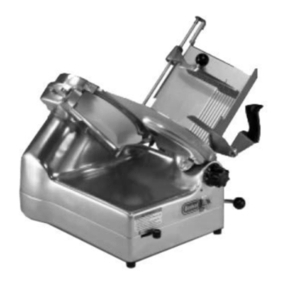
Berkel
Berkel 909/1 User manual
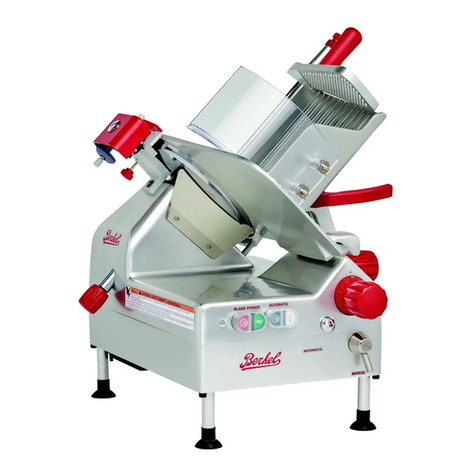
Berkel
Berkel B12A-SLC Owner's manual
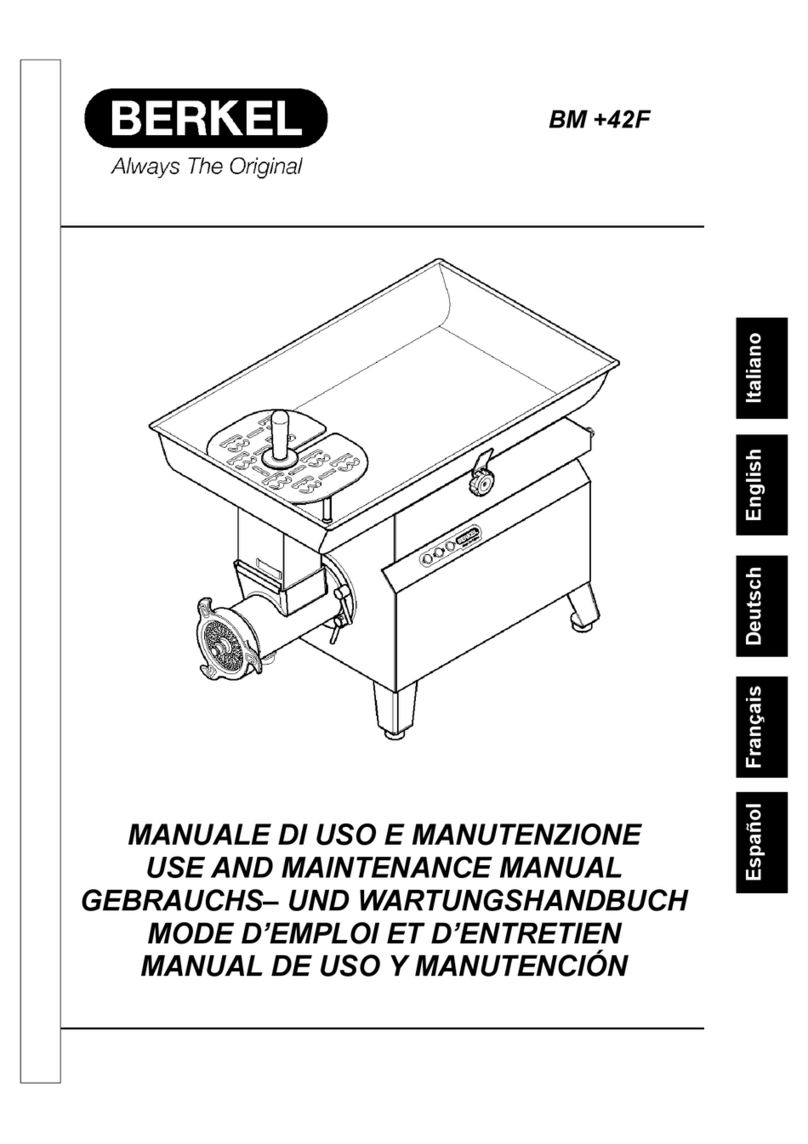
Berkel
Berkel BM+42F User manual
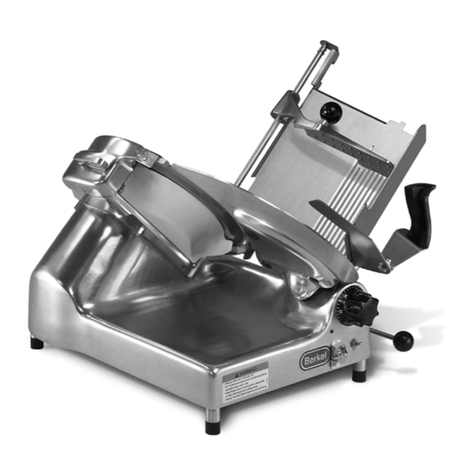
Berkel
Berkel 909M User manual
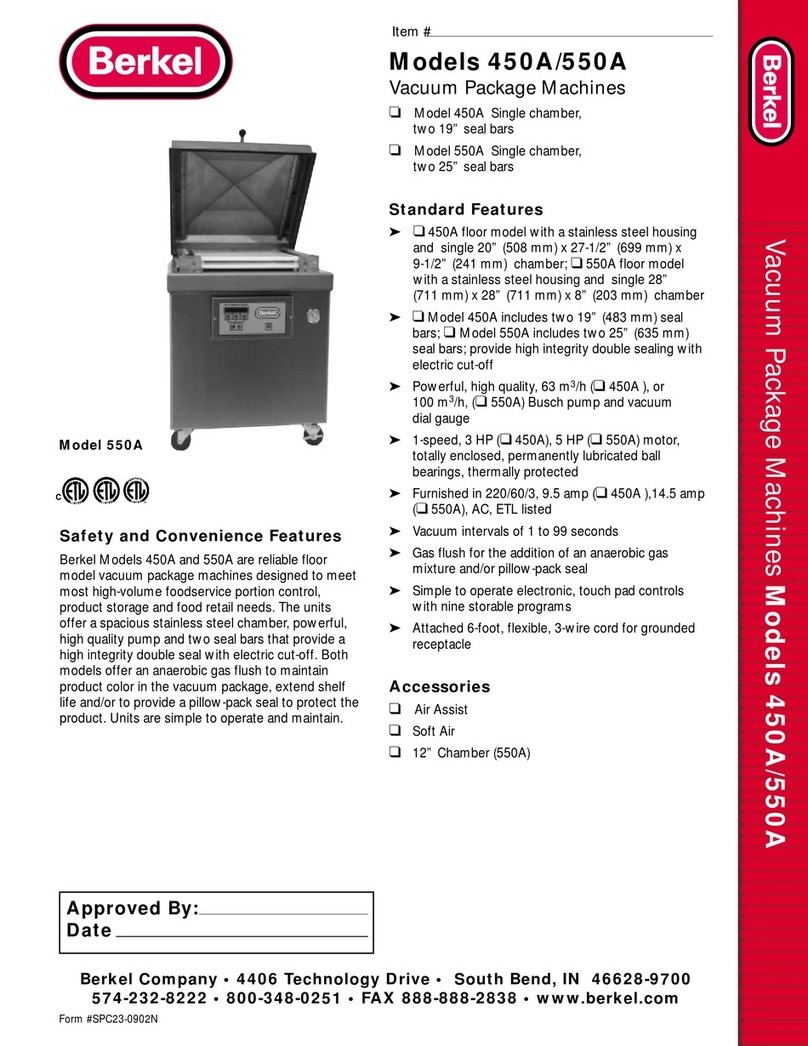
Berkel
Berkel 450A User manual
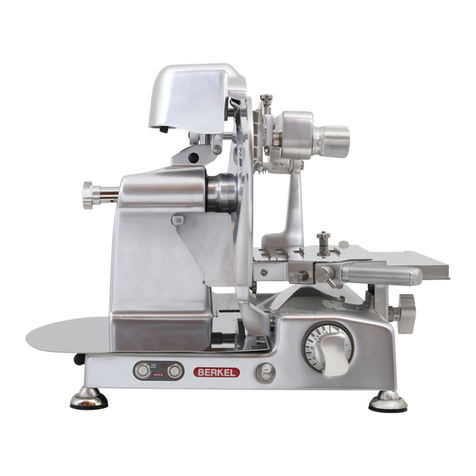
Berkel
Berkel Suprema Series User manual
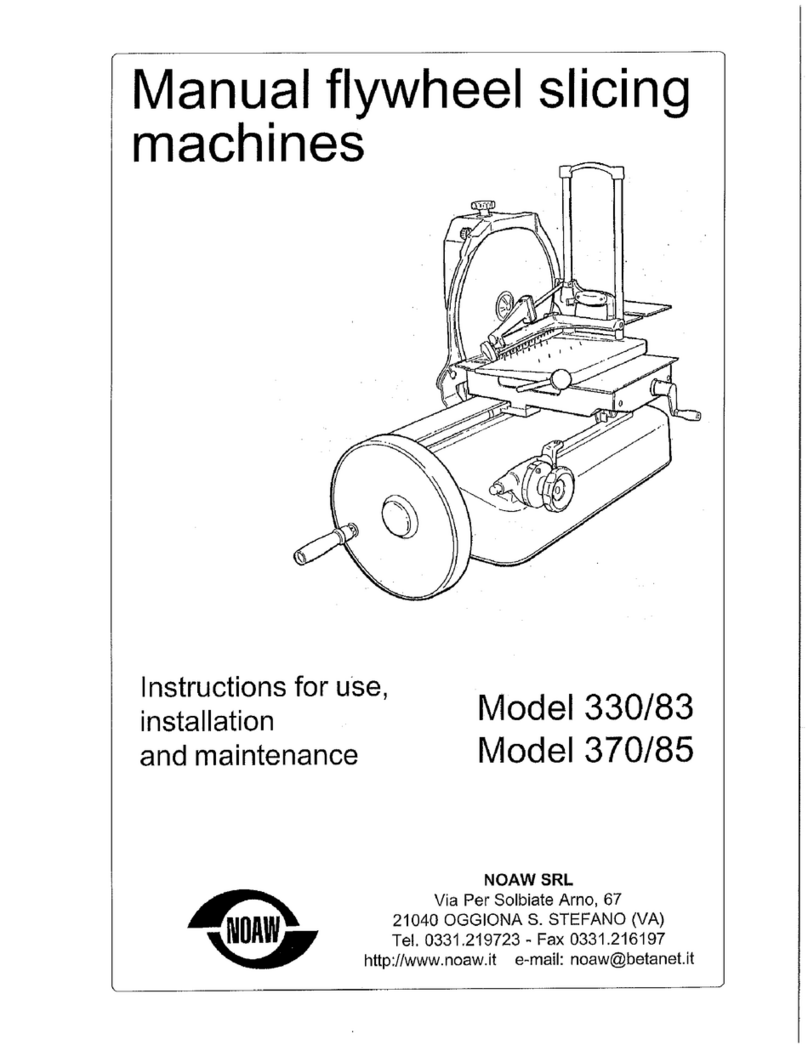
Berkel
Berkel 330/83 Troubleshooting guide

Berkel
Berkel 823 User manual
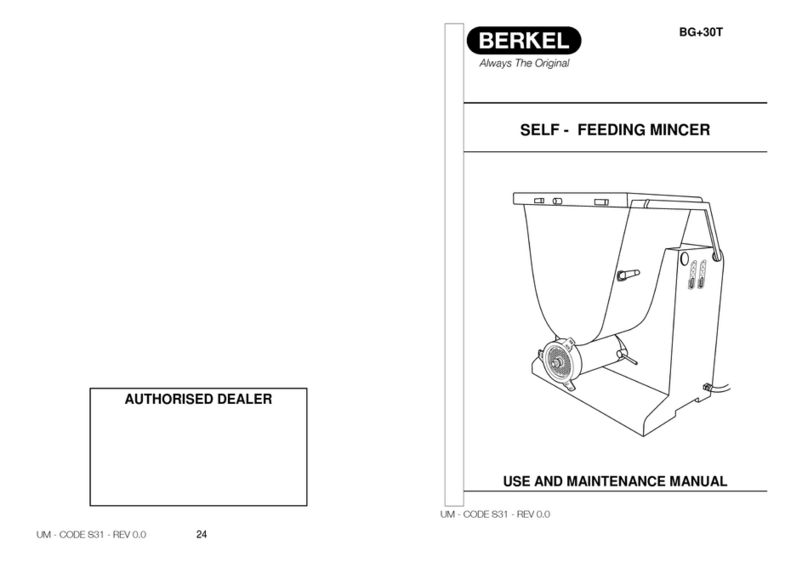
Berkel
Berkel BG+30T User manual

Berkel
Berkel 450A User manual
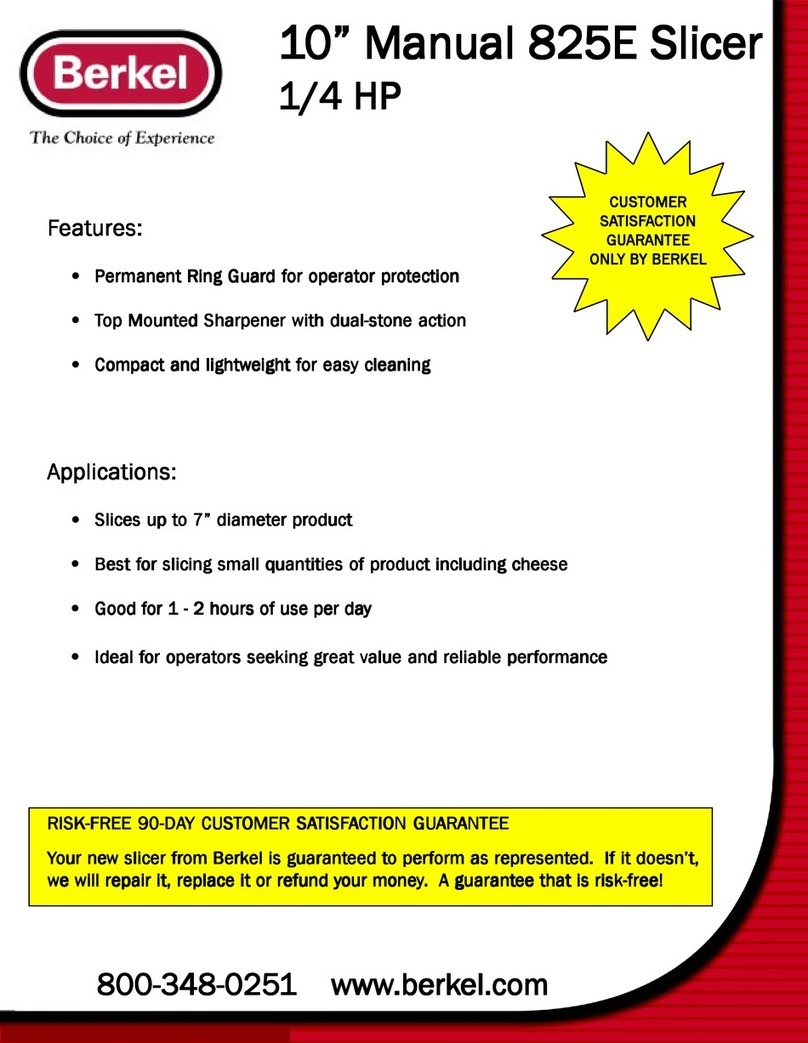
Berkel
Berkel 825E User manual

Berkel
Berkel 808 User manual
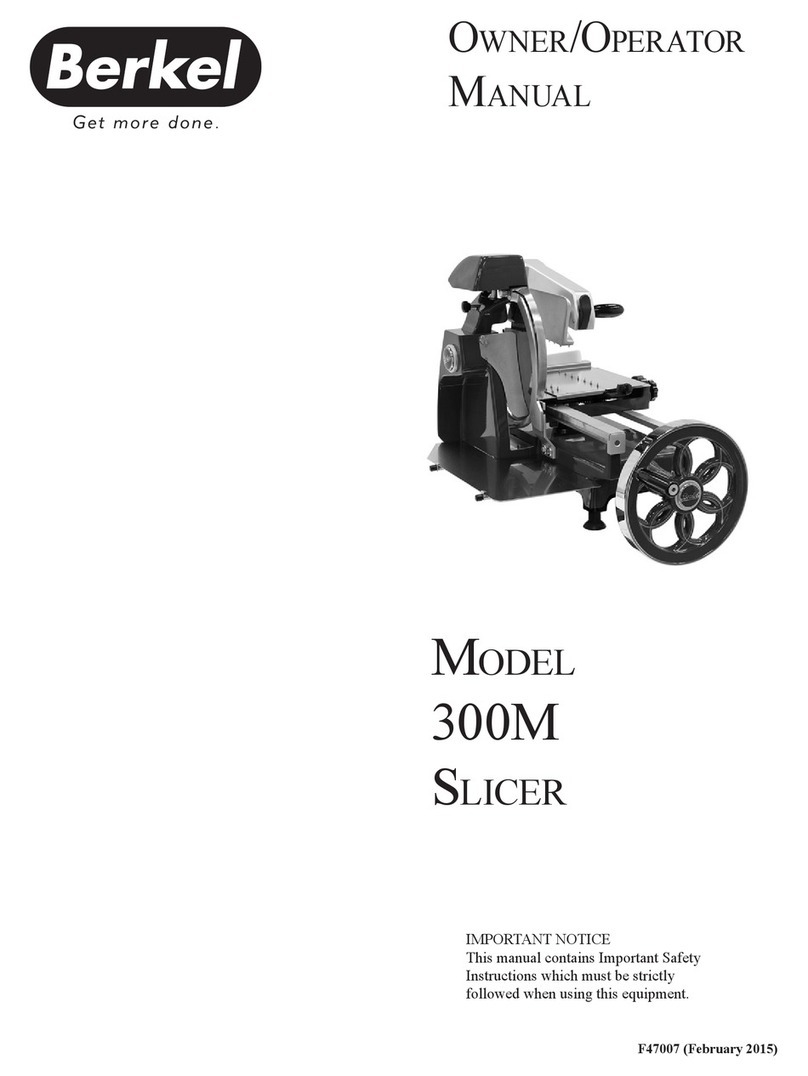
Berkel
Berkel 300M Owner's manual
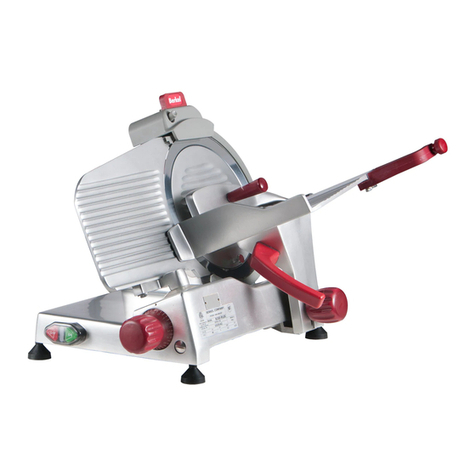
Berkel
Berkel 823E-PLUS Owner's manual
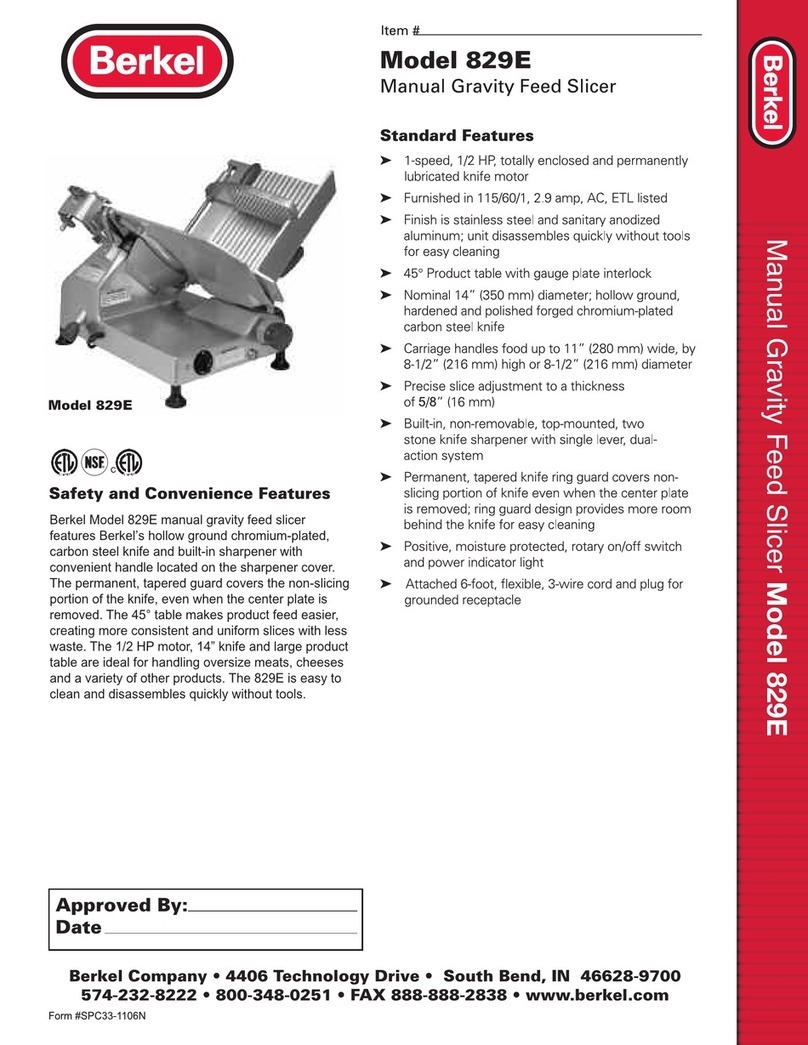
Berkel
Berkel 829E User manual
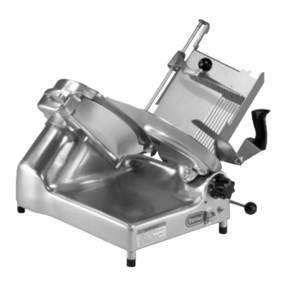
Berkel
Berkel 909A Owner's manual

Berkel
Berkel VOLANO B3 User manual
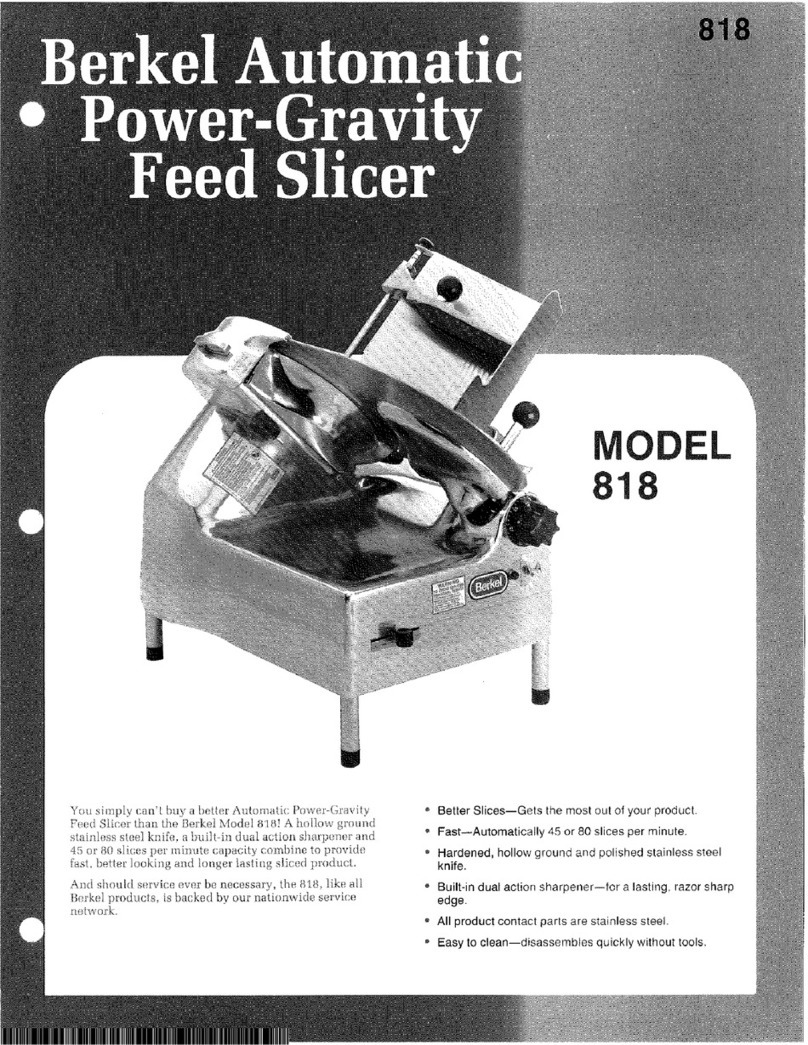
Berkel
Berkel 818 User manual

Berkel
Berkel 909/1 Owner's manual
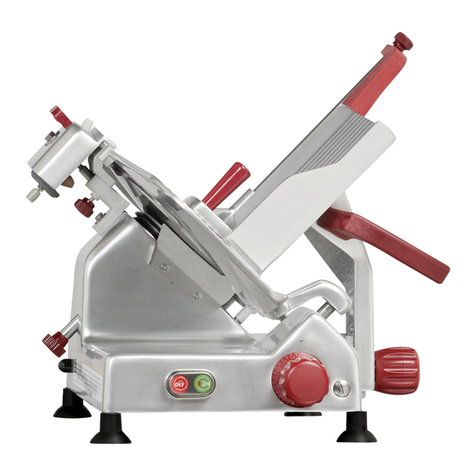
Berkel
Berkel 825A User manual

